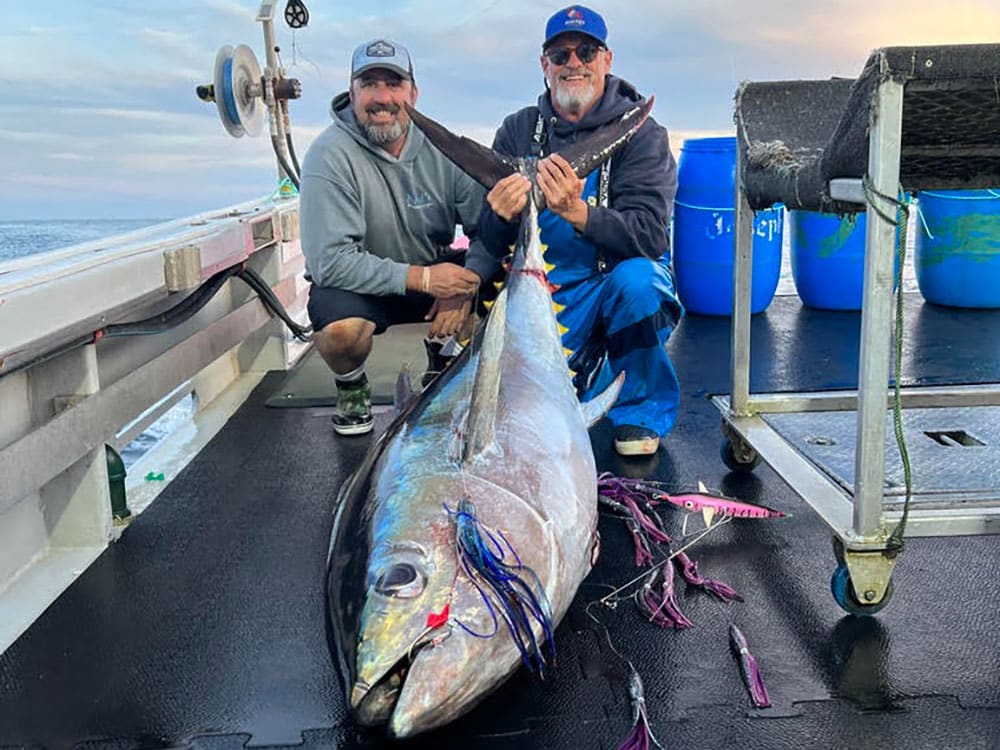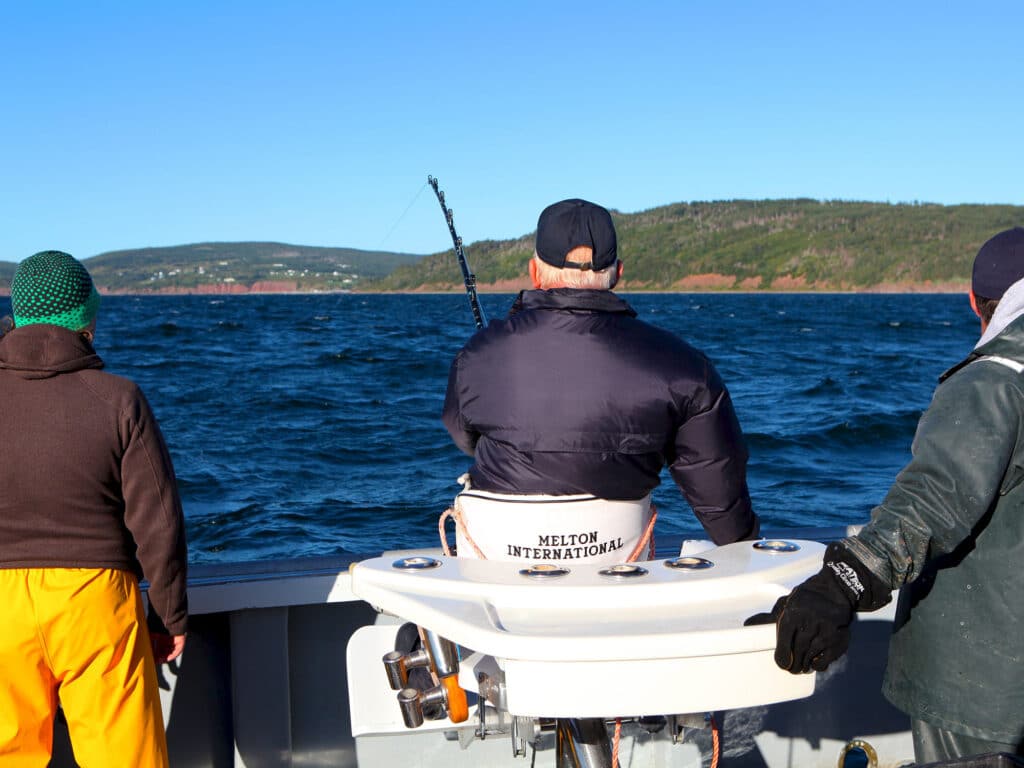
You might catch a giant bluefin tuna in many locations, as disparate as the Gulf of Mexico off Louisiana or the coast of Ireland. But no single area in the world concentrates huge bluefin like Nova Scotia (NS) and Prince Edward Island (PEI) in Canada’s Maritimes. Here, the cold waters of the northwest Atlantic attract great schools of forage, including the herring and mackerel on which tuna feast and fatten. Those same chilly waters discourage smaller bluefin, which have to work hard to stay warm. Bluefin are among the few fishes that can heat their bodies for more efficient predation. The giants’ larger body mass makes it easier for them to remain and feast in the cold, food-rich waters of the Maritimes.
A glance at the IGFA record book tells the story: Of the eight line-class world-record bluefin tuna weighing more than 600 pounds, six were caught off NS or PEI. That includes the remarkable 1,496-pound all-tackle world record bluefin that Ken Fraser caught in 1979.
While that record has remained intact for well over four decades, many bluefins approaching that size have been caught. “Our largest Nova Scotia giant bluefin tuna was caught by Graeme Weiss, of San Diego, in 2013,” says Capt. Josh Temple, who has guided anglers to NS giants for 14 consecutive seasons. “We estimated it at 1,400 pounds, and we have encountered larger fish than that one, which earned their freedom during the fight.”
Temple says there’s no doubt fish even larger than 1,496 pounds are swimming in NS waters, noting that Ken Fraser, who caught the world record and is a friend of Temple’s, “will be the first to tell you he’s seen them bigger.”
Temple cites the first day of his first season in NS 14 years ago, as the day that hooked him. After catching and releasing several giants (he says by NS standards, a giant is at least 700 pounds), “we spent the rest of the day hand-feeding bait to hundreds of giant bluefin. All of this in water less than 60 feet deep and less than 500 yards off the shore, within sight of my pickup, parked at the wharf.”
The focus on NS and PEI by enthusiasts around the world hasn’t ruined the fishery. On the contrary, says Temple, “Thanks to exceptionally well-developed and implemented management frameworks internationally and nationally, giant bluefin populations across the Atlantic have rebounded significantly” and nowhere have the benefits of that been more consistent than around NS. The fact that, “Ninety percent of the giant tuna caught by rod-and-reel in NS are released is a statistic that has surely contributed to the health and sustainability of their numbers in these waters,” he says.
Planning a Trip

When to Go: The giant season in Nova Scotia starts at some point in July and runs into October. Last-minute bookings with top charters are unlikely; best to book the winter prior to your intended trip. If you want the entire tuna trip planned and organized for you, consider signing up for the Sport Fishing Expedition in Nova Scotia.
Where to Go and How to Get There: While you’ll find some charters based in various ports in the province, Ballantyne’s Cove on the Northumberland Shore of Cape George, near the town of Antigonish on the northern end of the island, hosts a concentration of operations. You can drive here — as a reference, plan on 1,000 miles from New York or a bit less than half of that from Bangor, Maine. Those flying in will generally book to Halifax’s Stanfield International Airport. Some operators will arrange transportation from Stanfield to the harbor, or visitors can rent a car.
What to Expect: A number of charters operate from Nova Scotia ports, typically in downeast-style boats designed for fishing in these waters. Typically, they supply the heavy tackle needed to battle big bluefin from a fighting chair. This is catch-and-release fishing, so don’t plan on filling coolers. Figure on $1,700 ($2,300 Canadian), give or take, for a full day of fishing.
What to Bring: Many boats offer stand-up fishing; check with your skipper to see what he offers, and/or about bringing your own stand-up gear. Of course, a good camera and set of foul-weather gear are essential, though summer days are often dry and in the 70s F. By fall, expect 50s and 60s.
Where to Stay: You’ll find a variety of hotels, suites and cabins in the area. Many charter skippers offer or will arrange accommodations for clients.
What Else: As far as fishing goes, Temple says, “For most anglers, NS has a lot of great pelagic fishing left to discover. We’re also catching — seasonally — marlin, yellowfin, bigeye, [true] albacore and even wahoo and dorado along the continental shelf off southwest Nova Scotia, as well as good numbers of giant blue swordfish.”
Besides fishing, the Northumberland Shore is known for having the most “warm-water ocean beaches in Atlantic Canada.” You can explore the works of many skilled artisans here and eat lobster till you burst.
Helpful Links
- Places to go
- Search “bluefin tuna” for several charters
- Northumberland Tourism
- Bluefin Charters
- Tuna Charters Nova Scotia
- Sport Fishing Expeditions









